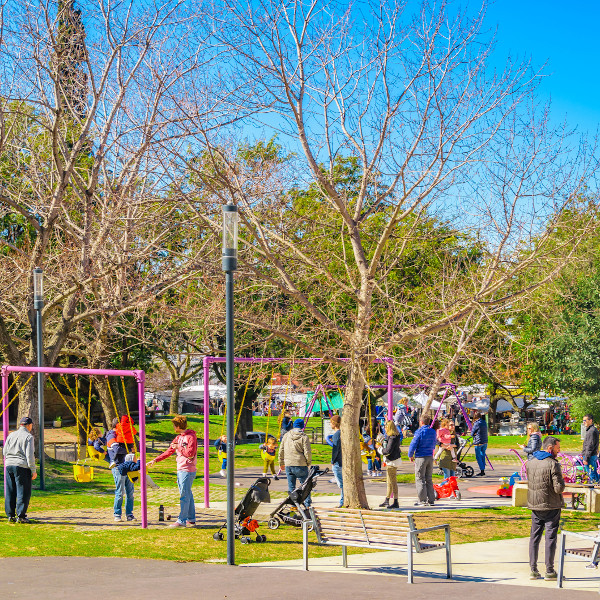How to encourage positive interaction in urban parks

Parks improve the quality of life for residents of a community by providing access to green spaces, hiking trails, and recreational facilities. Community parks also have the potential to facilitate connections between individuals of different races, cultures, and ethnicities which can lead to a reduction in prejudice and an increase in positive social relationships and personal interactions. So, what are some ways in which park authority agencies can facilitate positive interactions among individuals of diverse backgrounds?
Be Welcoming
Prior research has shown that the key to facilitating positive engagement in parks is to create an atmosphere where visitors of diverse races and ethnicities feel welcome. This is especially true for African Americans, according to a recent study conducted by researchers at Mason’s School of Sport, Recreation, and Tourism Management (SRTM) and Penn State University. The study examined different aspects of park usage by individuals who lived in major urban areas located throughout the United States. Researchers surveyed adults across four racial and ethnic groups (Non-Hispanic White, Non-Hispanic Black or African American, Non-Hispanic Asian, and Hispanic). The study results indicated that compared with individuals of other backgrounds, African Americans were much less likely to engage with people of other races and ethnicities within a park setting in the absence of a strongly inclusive and welcoming environment. This is likely because African Americans have long suffered a history of discrimination and segregation in public places including park facilities and have often feared for their safety as a result of racism.
Offer Programming and Events That Represent Diverse Races, Ethnicities, and Cultures
Park authorities can develop programs and events, such as music or arts festivals, which celebrate diverse races, cultures, and ethnicities. Programming of this nature can convey a constructive message of inclusivity and belonging and encourage positive interactions among individuals of different racial and ethnic backgrounds. Community parks can also be the perfect setting for hosting health and wellness fairs tailored to specific races and ethnicities. This is one of the recommendations contained in the “Parks for Inclusion” initiative launched by the National Recreation Park Association (NRPA) which noted that people of color living in low-income area are more likely to suffer from chronic diseases, such as obesity, cardiovascular disease, and diabetes, compared with Caucasians. In developing programs and events that represent the diversity of the community, park agencies can make them more relevant to the community by obtaining input from neighborhood groups and park users through surveys, social media, interviews, and similar channels of communication. If engagement between park authority agencies and community members is inclusive, genuine, and transparent, it can serve as a valuable tool for building ongoing trust.
Consider Community Representation in Policymaking
Some park authority agencies engage with members of the community on a variety of policy matters to determine if potential actions being considered will negatively impact marginalized or underserved groups who live in lower income, urban neighborhoods. An example is the “Equity and Anti-Racism Lens” initiative used by the Portland, Oregon Parks and Recreation bureau which consists of 7 principles designed to ensure full consideration of racial equity in the agency’s decision-making process.
Include Images That Portray Community Diversity in marketing materials
Marketing materials including ads, brochures, videos, posters, flyers, and websites that are intended to promote patronage of community parks can feature images of people of different races and ethnicities engaging with one another and enjoying the outdoors or participating in recreational activities. This can help promote the idea that parks are safe, friendly, public spaces where diversity and inclusivity are the norm. In addition, messaging can be added to promotional materials emphasizing that all community members are welcome at the park facilities.
Hire a diverse staff
A more racially diverse park staff can help park visitors of different races feel more at ease and reinforce a sense of belonging which, in turn, can facilitate positive interracial interactions. Staffing should reflect the racial and ethnic composition of the community that is served by the park. In addition, the hiring of community outreach specialists can improve relations between the parks and the community and help create an atmosphere conducive to positive interracial engagement.
To learn more about how to encourage positive interaction in urban parks, read this article by School of Sport, Recreation, and Tourism Management faculty Sammie Powers. Mason's School of Sport, Recreation, and Tourism Management offers programs in recreation management. Please visit our website to learn more.
